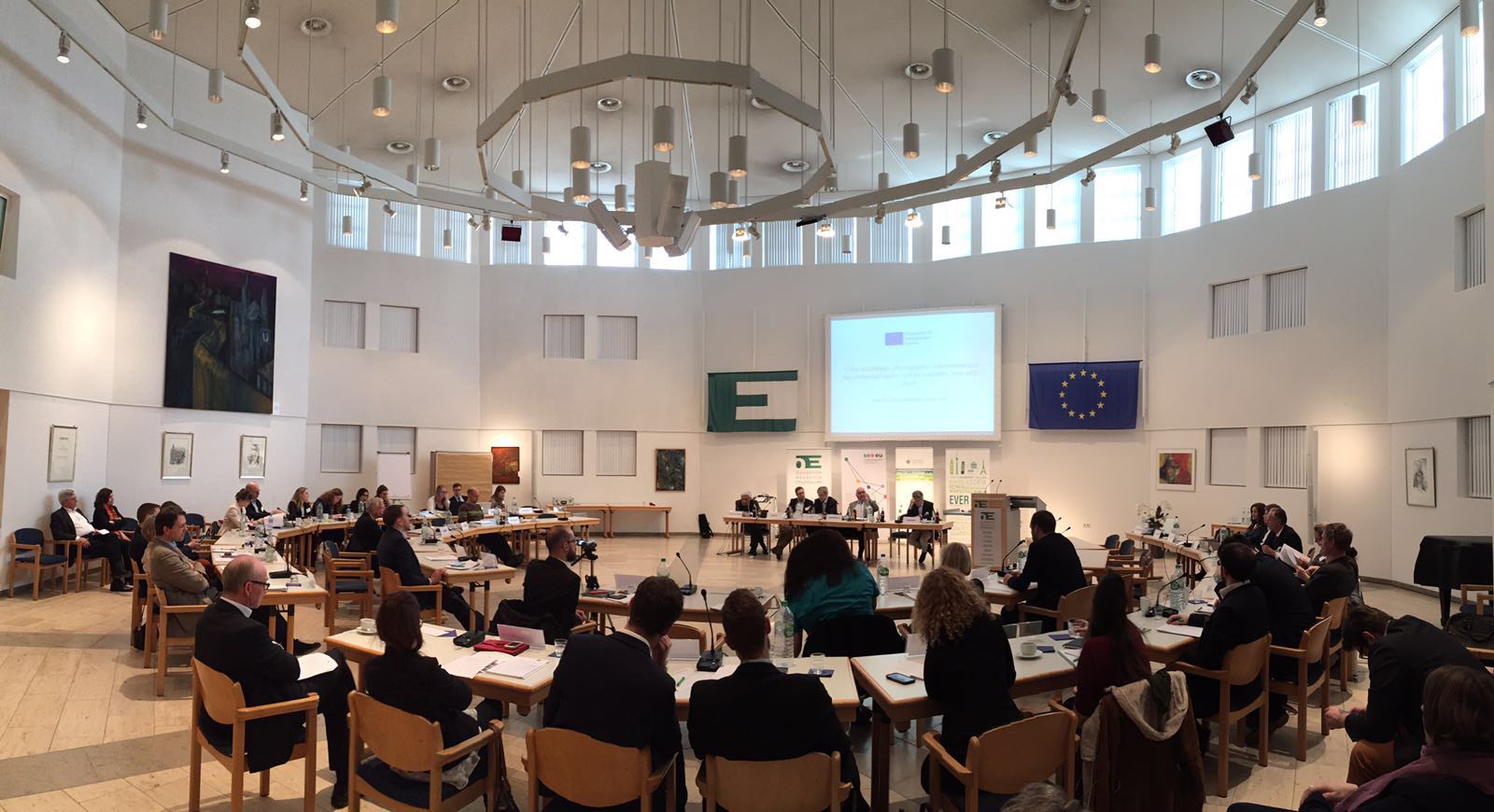Friday, 8 April 2016
A. Introductory Comments
- Prof. Dr. Thomas Giegerich, LL.M. (Europa-Institut, Saarland University): How to Reconcile the Forces of Enlargement and Consolidation in „an Ever Closer Union“
- Dr. Funda Tekin (Institute for European Politics, (IEP), Berlin): Defining „Flexibility“ and „Differentiation“
- Robert Böttner, LL.M. (University of Erfurt): The Development of Flexible Integration in EC/EU Practice
- Dr. Richard McMahon (University of Portsmouth): How Historically Emerging Transnational Spatial Patterns Shape the Geography of Differentiated Integration
B.1. Selected Types of Differentation in the EU I: Opt-Outs, Common Foreign and Security Policy, Independence Movements
- Dr. Maya Sion-Tzidkiyahu (The European Forum, the Hebrew University): Comparing Opt-Outs: How Different is Diffentiated Integration
- Prof. Dr. Sebastian Graf von Kielmansegg (Kiel University): CFSP, a Pool of Flexibility Models
- Katharina Crepaz, PhD (TUM and Max Planck Institute for Social law and Social policy): How Independence Movements Trigger Flexibility in the EU
B.2. Selected Types of Differentiation in the EU II: European Monetary Union
- Dr. Christian Deubner (FEPS Scientific Council): Differentiated Integration in the Economic and Monetary Union
- Dr. Gianni Lo Schiavo (European Central Bank): Fiscal Compact and ESM Treaty
- Clelia Lacchi, LL.M. (Luxembourg University): Economic and Monetary Union: How the Eurozone Creates new Challenges for the EU Legal Order
B.3. Selected Types of Differentiation in the EU III: Enhanced Cooperation
- Dipl.-Jur. Sebastian Zeitzmann, LL.M. (European Academy of Otzenhausen, Europa-Institut, Saarland University): Enhanced Cooperation – A Constitutional Principle of the EU?
- Berenice Lemoine (University of Dundee): Rome-III- Regulation: Getting Divordec in Europe
- Prof. Dr. Thomas Jaeger LL.M. (University of Vienna): The End to a Never-Ending Story? The Unitary Patent Regime
- Marius Vascega (European Commission, Representation in Lithuania): Approaching the Fortress of Unanimity: Financial Transaction Tax under Enhanced Cooperation
C. Regional Patterns of Flexibility inside the EU
- Prof. Dr. Ellen Bos (Andrassy University Budapest): The EU and its Regions: Macroregional Strategies
Saturday, 9 April 2016
D. EU Neighbours: Source of new Flexibility Models?
- Dr. Christoph Schnellbach (LMU Munich): Differentiation and EU Neighbourhood Policy: A Need for Change?
E. A View on EU Flexibility from the Outside: America, Asia, Germany and the Council of Europe
- Prof. William T. Daniel, PhD (Francis Marion University, Florence SC): An American Perspective on EU FLexibility
- Prof. Dr. Clara Portela (Singapore Management University): How Asia Perceives Flexible Integration in the EU
- Prof. Dr. Hermann-Josef Blanke (University of Erfurt): What Does the German Basic Law Say on Flexible Integration?
F. Flexibility in Global Systems of International Cooperation
- Dr. Manuela Scheuermann (University of Würzburg): How Flexible is the World Order? What we Can Learn from the United Nations
- Prof. Dr. Thomas Cottier (University of Bern): Better Something than Nothing: How the WTO Facilitates amongst its Members



Ein Kommentar
Die Kommentare sind geschlossen.